
Household Disasters Head off These Home Problems Early or Pay the
In conclusion, unravelling the complexities of HVAC systems through the lens of a comprehensive diagram empowers homeowners and professionals alike. A nuanced understanding of the system's anatomy enables informed decisions, ensuring both comfort and efficiency. hvac system diagram In the realm of indoor comfort, HVAC systems play a pivotal role.
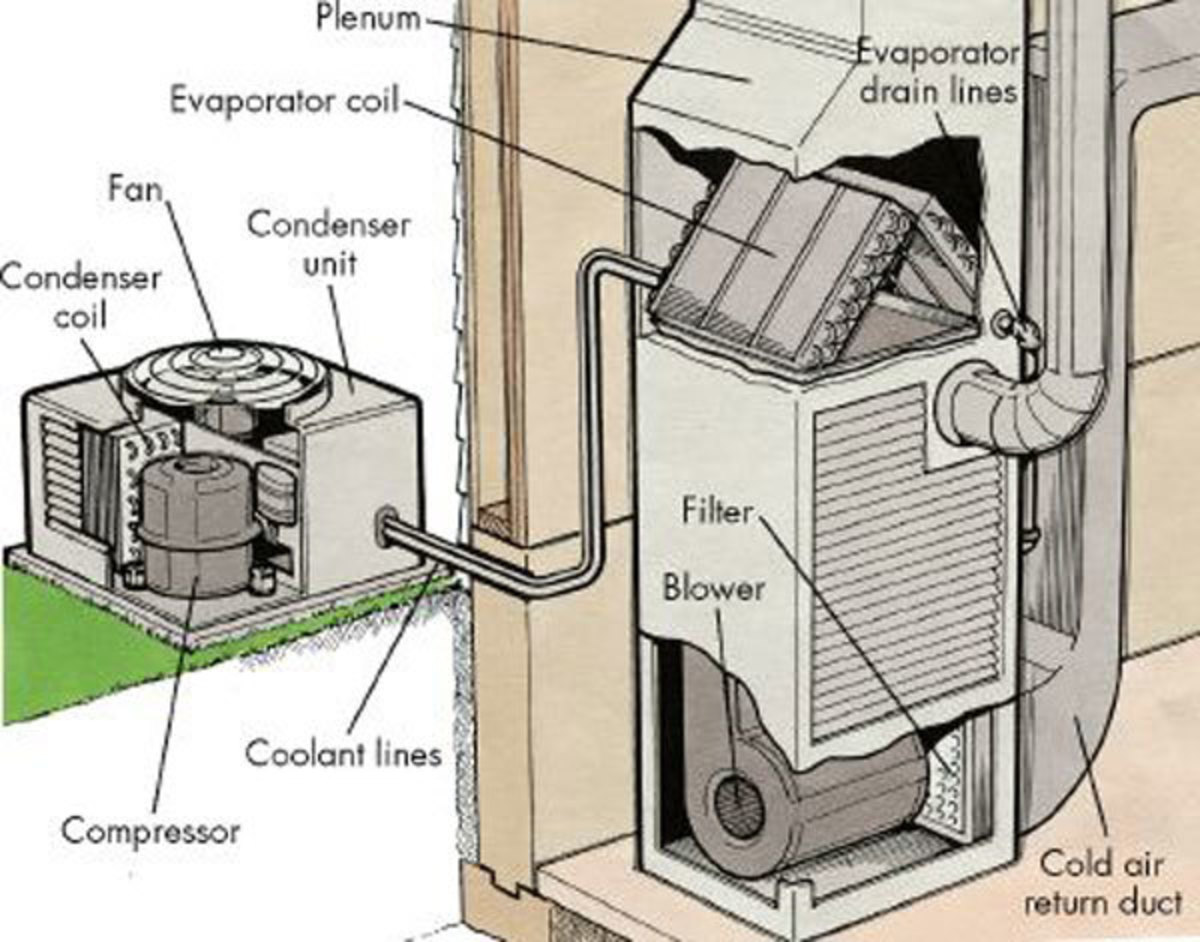
Coleman Evcon Air Conditioner Not Working Sante Blog
Are you looking to improve the efficiency of your heating, ventilation, and air conditioning (HVAC) system? The key to achieving optimal efficiency lies in designing a well-planned HVAC system that considers your space's unique needs and characteristics. Apartment HVAC Plan
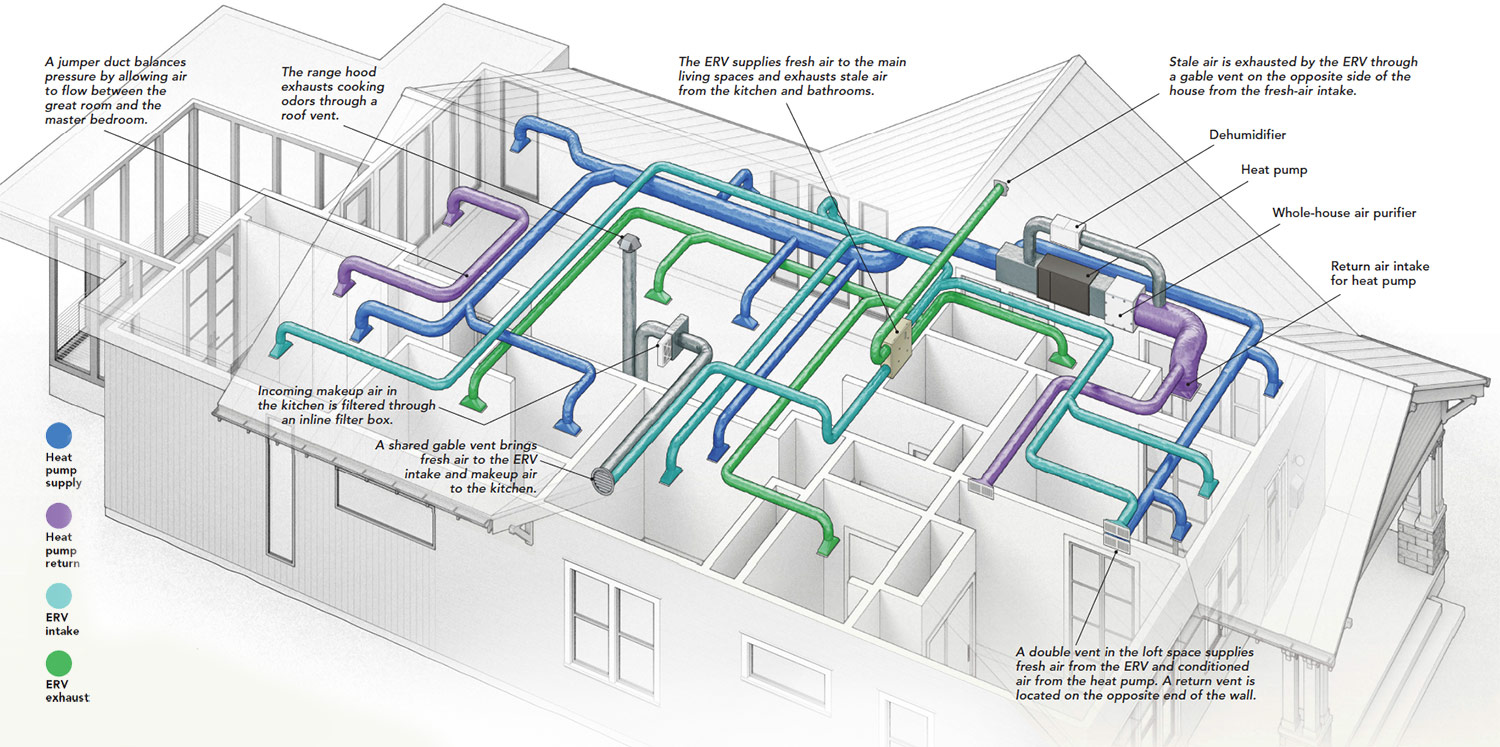
Designing an HVAC System for a Passive House Fine Homebuilding
How HVAC Works. Your HVAC system is mainly known for the fact that it keeps your home at the right temperature year-round - but it also helps ventilate. The system starts with the thermostat. If the temperature in your home is warmer or cooler than the set temperature you've chosen, the system will turn on and work until the set temperature.
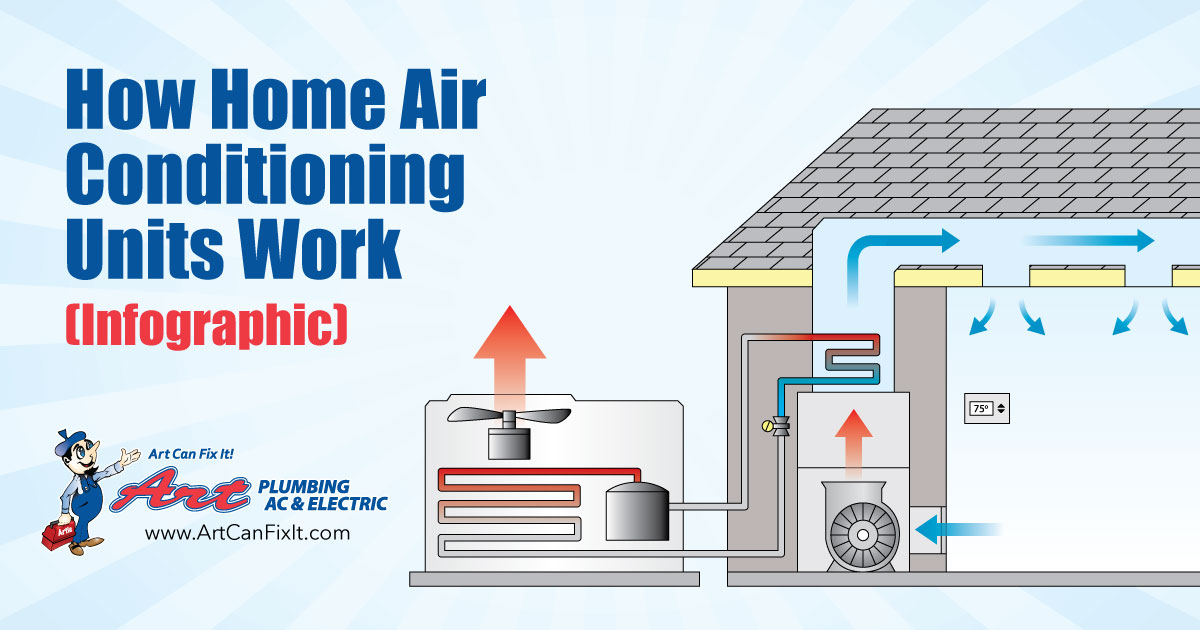
How Hvac Systems Work Diagram
The HVAC system consists of 5 key components that are all shown in the diagram above: Compressor - The compressor is the machine inside the air conditioning box outside of your home. It is used to compress refrigerant which simultaneously heats it before the refrigerant goes into the condenser.

hvac duct system design Google Search Hvac design, Hvac, Hvac duct
HVAC system diagrams and schematics fall into three different categories: ladder, line, and installation diagrams. Here's how those break down. Ladder Diagrams.

Basic Principles of a HVAC system ENGINEERING UPDATES
EVAPORATOR COIL. This is the piece of your air conditioning system that most people never see. It's contained in a metal box called a plenum, and sits on top of your furnace. If you have a horizontal furnace in an attic, the evaporator coil will sit on one end of the furnace instead of on top. The 'inside unit' or 'indoor coil' are.

Install Central Air Cost Great Discounts, Save 49 jlcatj.gob.mx
HVAC Wiring Diagram and Legend. We'll jump right into showing you a schematic diagram for a simple air conditioning unit. We'll make a ladder diagram using a simple air conditioner as our example. First we have the main electrical supply lines L1 and L2 providing 208/230 volt, single phase power. Then we'll need a transformer to provide.
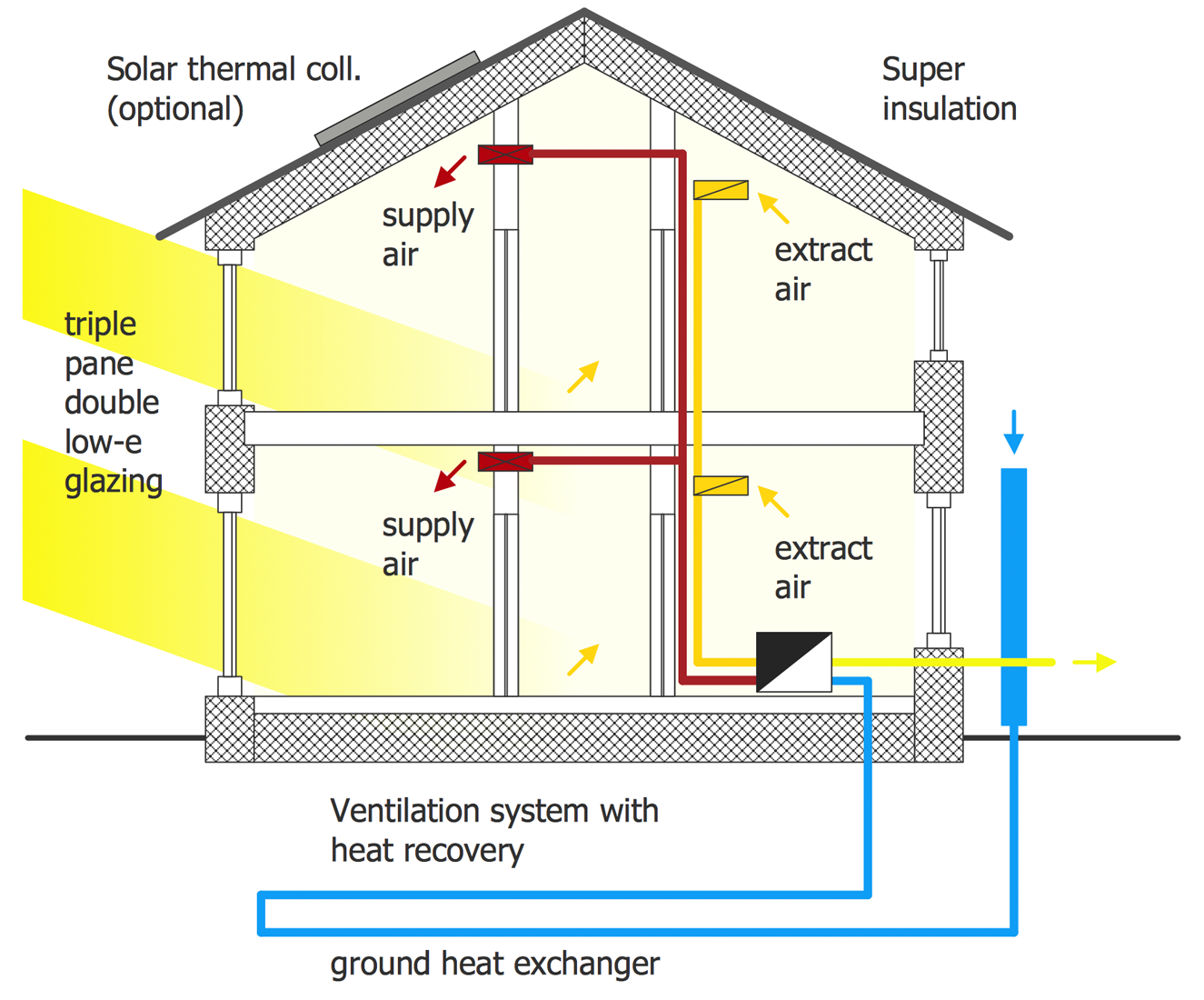
HVAC Plans Solution
Bob Formisano Updated on 07/28/19 Nine OK / Getty Images The workings of a home air-conditioning system are mystifying to many of us. Furnaces are easy to understand—they heat air and blow it around your home through ductwork. Boilers make hot water or steam and move it around your home in pipes.
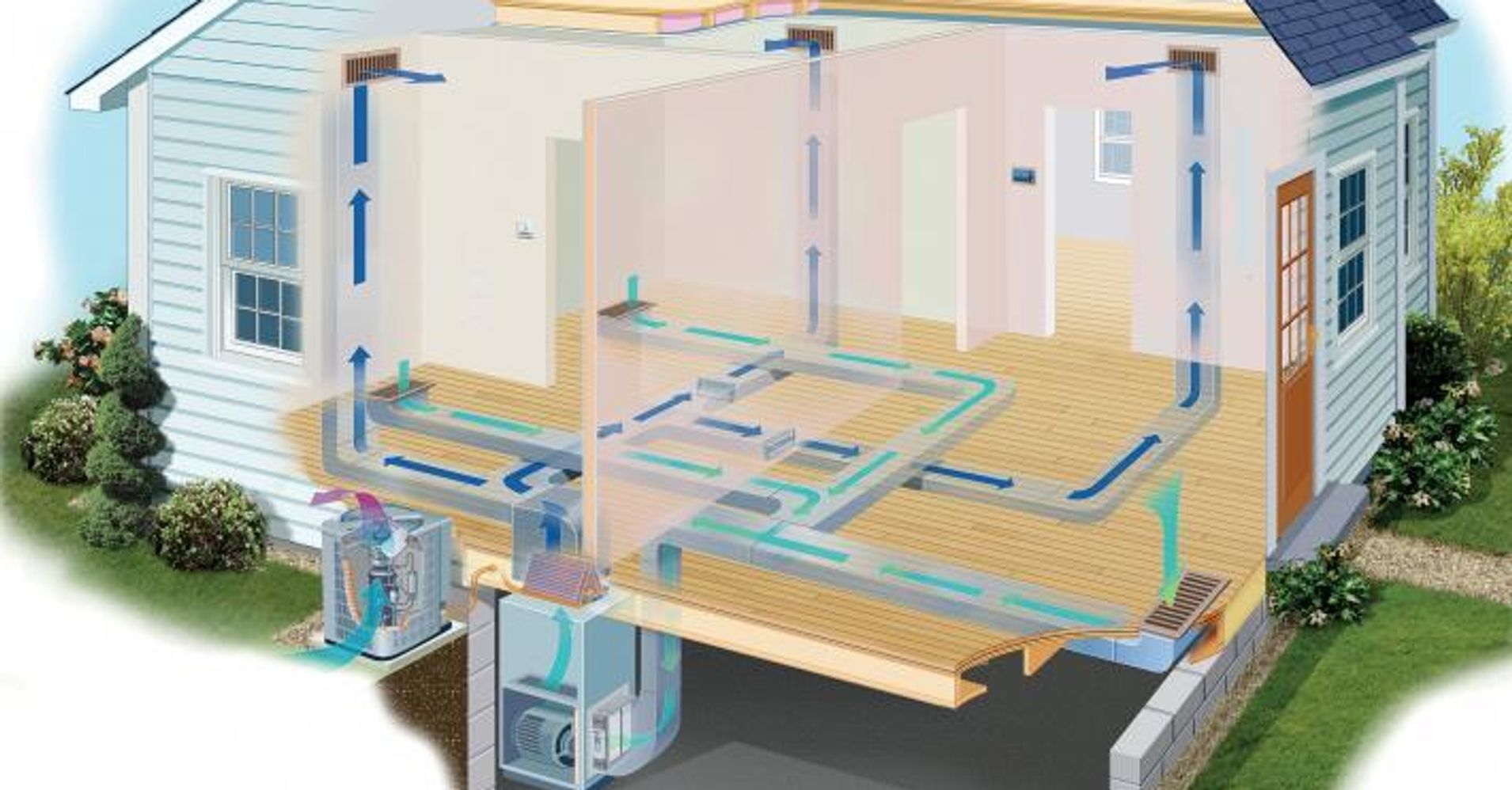
Everything You Need to Know About How Central AC Works HuffPost
Main Components of an HVAC System Diagram 1. Outdoor Unit (Condenser) These are the big boxes you see outside residential homes, business complexes, or on top of factory buildings. These boxes are one component of the HVAC system that works to cool your space.

hvac diagram for a building Google Search Building Summary
The HVAC plans are schematic, using symbols and abbreviations to denote the various parts such as equipment, ducts, control devices, diffusers, and piping. For example, chilled water and hot water supply lines are denoted as: CWS - Chilled Water Supply CWR - Chilled Water Return HWS - Hot Water Supply HWR - Hot Water Return
/cdn.vox-cdn.com/uploads/chorus_asset/file/19521285/air_handler.jpg)
Diagram Of Residential Hvac System Hvac Manuals Wiring Diagrams Faqs
In most cases, central air conditioning refers to a split-system air conditioner or a heat pump, both have an outdoor and indoor unit. The indoor and outdoor units work together to distribute cool air through a system of ducts in your home. Together, they are composed of five main parts: a thermostat, an outdoor unit (holds a fan, condenser, and condenser coil), an indoor unit (holds a fan and.
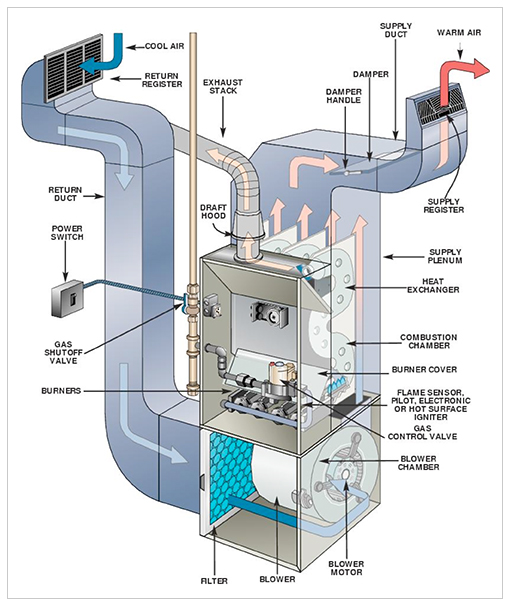
Hvac Systems new Residential Hvac System
The compressor pressurizes the refrigerant gas and sends the refrigerant into the outdoor unit's condenser coil. A large fan pulls outdoor air through the condenser coil, allowing the air to absorb heating energy from the home and release it outside. During this process, the refrigerant is converted back to a liquid.
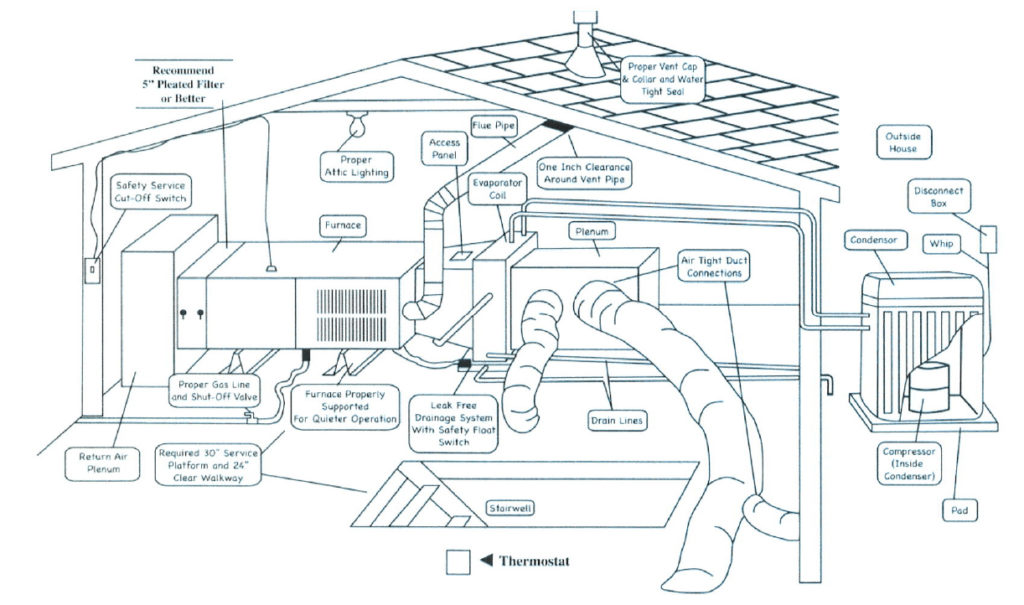
Furnace System Diagram Main Parts Of A Furnace With Diagram Upgraded
HVAC is a term stemmed from 'Heating, Ventilating, and Air Conditioning', and it is a system that is aimed to provide comfort for indoor areas. Science contributes to identification of various measures for that comfort and thermal control, and HVAC systems will be engineered based on the desired design points.

This simple diagram shows you how your HVAC system's ductwork connects
HVAC System Installation Diagram Common HVAC Problems and Solutions Diagram HVAC Safety Considerations Conclusion: Recap and Final Thoughts on Home HVAC Diagrams HVAC Basics What Does HVAC Stand For? First things first, let's decode that HVAC acronym. HVAC stands for Heating, Ventilation, and Air Conditioning.

Introduction to HVAC System
1.Burning propane or natural gas generates heat in the furnace's burner. 2.The heat produced passes through a heat exchanger, making it hot. 3.Air from the home's ductwork is blown over the heat exchanger, warming the air. 4.The furnace's blower then forces the heated air into the supply ductwork, distributing it throughout the home.

From the Ground Up HVAC This Old House
By Scott Gibson | May 8, 2020 Long before an HVAC system can be put to paper a variety of calculations must be made about heating and cooling demands, how conditioned air will be circulated, and what type of equipment is most appropriate for both the house and the climate. Drawing courtesy PAE Consulting Engineers.